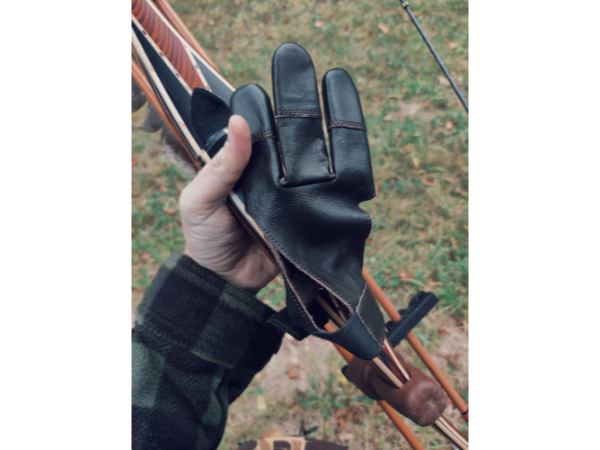I have had the immense pleasure of hunting with T. J. Conrads the past two elk seasons. Not only because of his campfire stories and bowhunting expertise, but the food can’t be beat. For those who follow his Instagram posts, you’ll know when it comes to food, he cuts exactly zero corners. Fortunately for me, his cooking on the mountain is no different. However, as he spends this summer preparing for his upcoming goat hunt, I found my biggest disappointment to be figuring out food for my elk season. I am more limited in equipment, and good old fashioned know how, when it comes to mountain cooking.
My first thought of a solution to this “problem” is to do what I’ve always done in the past. Go stock up on prepackaged freeze dried meals. They’ve never steered me wrong in the past…except they’re typically loaded with sodium, carbohydrates, and other preservatives. Not that I’m a calorie counter by any means, unless I’m planning an extended trip out with only what I can fit in my pack, but the reaction inside my gut after eating those for a few days is… well… not pleasant. (I have other terms I’d like to use, but for the sake of keeping this PG, we’ll just leave it at that.)
Something clicked, and I just happened to remember the dehydrator we have sitting in the random cabinet that’s completely out of place in our kitchen. The one that holds 15 water bottles, most without lids, and other random stuff we essentially just throw into the abyss to be forgotten about for the rest of eternity. By “something clicked” I mean my wife Kerri suggested that we make our own backpack meals, but she also likes to tell me that “nothing’s a good idea until it’s your idea” so I’ll take one for the team here, and take credit.
My first step was to figure out what protein I would want. This was fairly easy, as I went with chicken. It is a pretty versatile meat that goes with a myriad of seasonings, and canned chicken rehydrates well once dehydrated. A second option to the canned chicken, would be to cook chicken in a pressure cooker to make sure it’s as moist as possible. Obviously dehydrating takes the moisture out of the meat, but canned or pressure cooked chicken just seems to rehydrate better.

This is what one can of chicken looks like after being dehydrated; crunchy and light weight.
The next step was to figure out what to have with the chicken, so I popped onto Amazon, ordered some dehydrated vegetable soup mix, and voila… chicken and vegetable soup. Problem solved, that is until Kerri said, “You should do a write up for the TBM website on this” which is, of course, a fantastic idea, so I looked at her and said “Hey, I know… I’ll do a write up for the TBM website! But I’ll have to do a little more than just veggie soup mix.” So it’s back to the drawing board.
My basic method for backpack meals is, one protein, one carbohydrate, a handful of veggies, and some seasonings to mask the flavors I don’t like (see: veggies). Pretty much any combination of these will work so the next question is how to dehydrate them.
For protein, basic rule of thumb is dehydrate at 145° for six to eight hours. Meats will be hard after they are done, this is normal. Veggies are a bit trickier, as some will need to be cooked prior to dehydrating. If it’s a veggie you would eat raw (peppers, tomatoes, onions, etc) there is no need to cook prior to dehydrating. For veggies like corn, green beans, broccoli, or others that you would want to cook prior to eating, a quick eight minute steam should be enough prior to dehydrating. Heartier veggies like onions should be dehydrated at 135° or 145° for six to eight hours. More delicate veggies like tomatoes are 125° to 135° for the same time.

Here are the diced bell peppers before they went into the dehydrator.
For carbohydrates, I typically stick with rice. The easy option is instant rice, as you just open the box, portion it out, mix it with your protein and veggies, and call it a day. If you would like something a bit more flavorful, you can cook regular white or brown rice in your favorite broth, and dehydrate at 125° for five to six hours. Make sure you place the rice on a nonstick surface like parchment paper first, and check a couple times during the dehydrating process to break up any rice that’s stuck together.
For seasonings, I just put together a combination in a separate pouch, and add it during or after the rehydrating process. See example recipe below for how this works.
Curried Chicken and Rice
Portion sizes are ultimately up to you and how many calories you want/need on the trail. This is my portion size for example purposes.
- ½ cup rice (instant or dehydrated)
- ¼ cup chicken (dehydrated)
- ¼ cup veggies (dehydrated, I used bell pepper and onion)
- 1 Tbsp Powdered milk
- 1 tsp curry powder
- ¼ tsp chili powder
- Cayenne pepper to taste
Put powdered milk, curry, chili powder, and cayenne into one baggie, and the rice, chicken, and veggies into another baggie. That’s it…you’re ready for the trail.
On the mountain, bring approximately 1 ½ cups of water to a boil. Add chicken, rice, and veggie pack to water and boil until desired consistency (at least 1 minute if using instant rice, but just keep an eye on it until you’re happy with the consistency). Sometimes there will be excess water left after the meal is cooked, so drain any excess before adding the spices. When you’re happy with it, stir in your spice pack, kick back, and enjoy a home cooked meal, away from home (hey… you cooked everything at home right?).
As a side note, since these lack the preservatives of the prepackaged meals, they are not meant to last for years in your cold war bomb shelters. I’d make these a few weeks before the season opens, and store in a cool spot like garage or basement if possible. You can also put them mixtures in the freezer if that makes you more comfortable.








Leave A Comment